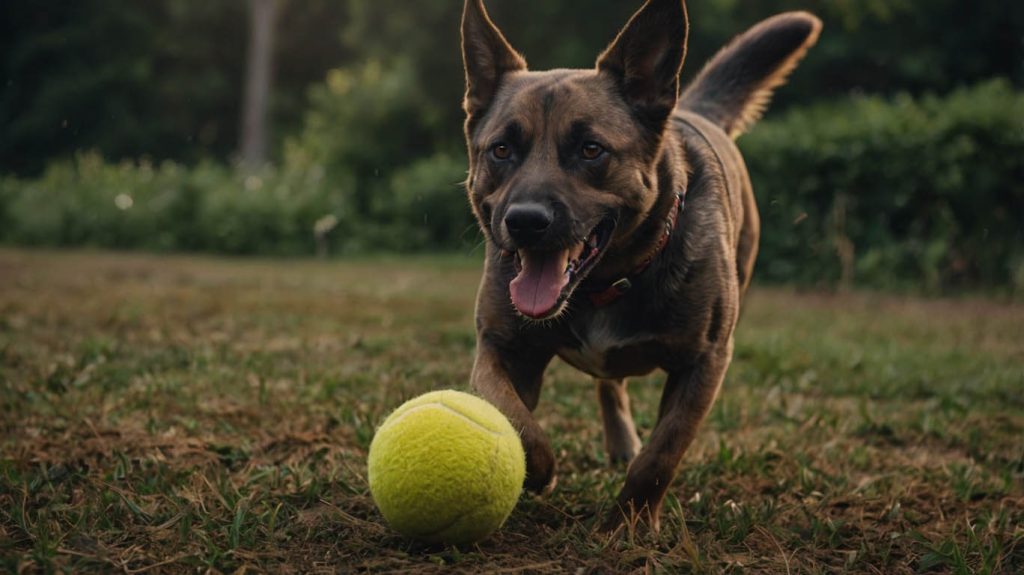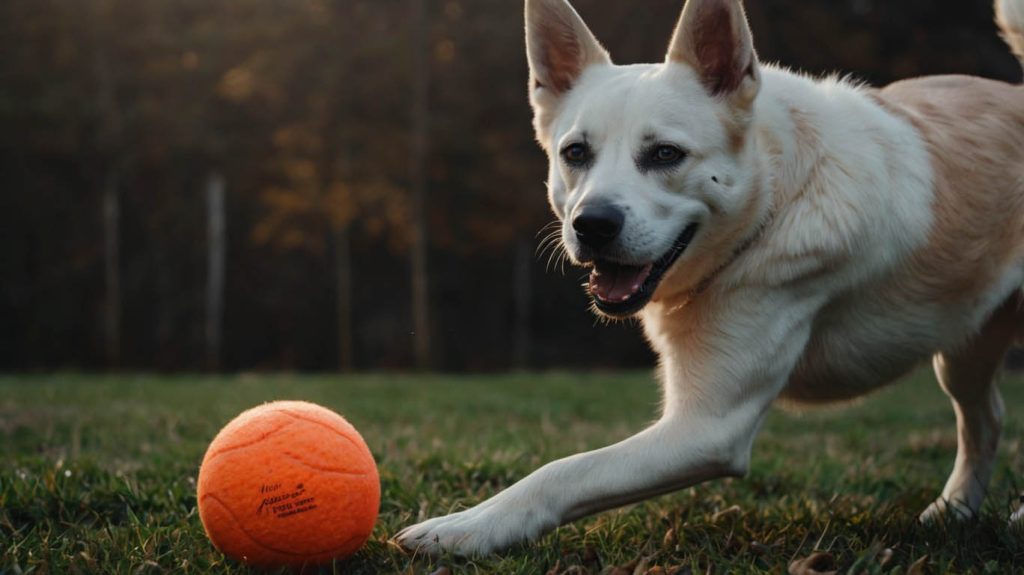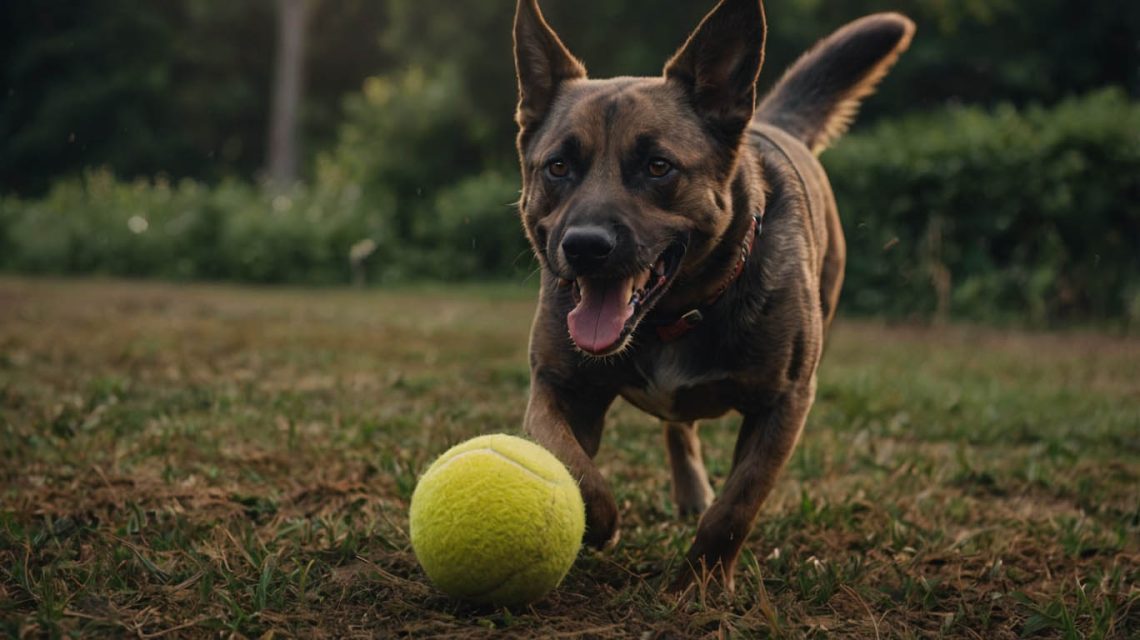Does your dog love to chase the ball but refuses to bring it back? You’re not alone. Many owners struggle to figure out how to teach a dog to bring a ball back without turning playtime into a frustrating game of keep-away. Fortunately, you can teach your pup to return the ball reliably using positive methods, consistency, and some fun tricks.
In this guide, we’ll walk through a real-world storyline, training breakdowns, expert tips, and simple adjustments that work for any breed or age.
Why Bringing the Ball Back Is Crucial
Before we dive into the how-to, let’s look at why it’s so important to teach your dog to bring the ball back. First, it transforms chaotic fetch games into interactive bonding sessions. Second, it improves recall, obedience, and trust. Third, it reinforces focus, helping your dog ignore distractions and stay engaged with you.
Ultimately, teaching how to teach a dog to bring a ball back builds a solid foundation for better communication.

The Story of Max: From Chaser to Fetch Champion
Let’s meet Max—a three-year-old Golden Retriever who loved chasing balls but had no interest in returning them. Every fetch session turned into a high-speed game of keep-away, leaving his owner exhausted and confused.
After trying tug games, treats, and even ending playtime early, nothing seemed to work. Then one day, Max’s owner introduced the two-toy method and used a high-value reward system. Within a week, Max transformed into a perfect fetch partner—happily returning and dropping the ball every time.
This real-life success story shows that how to teach a dog to bring a ball back doesn’t require magic—just the right strategy.
Start With the Right Mindset and Tools
Training doesn’t begin with the dog—it starts with you. Patience, consistency, and encouragement are non-negotiable. Also, ensure you have:
- Two identical toys or balls
- High-value treats (like small bits of cooked chicken)
- A clicker (optional, but helpful)
- A calm, distraction-free area to start training
With these essentials, you’re ready to tackle how to teach a dog to bring a ball back like a pro.
Step-by-Step: How to Teach a Dog to Bring a Ball Back
Let’s break it down into practical, actionable steps.
Step One: Build Interest in the Ball
Not every dog naturally cares about balls. So first, you need to create excitement. Wiggle it around, toss it gently, or pair it with treats. The goal is to make the toy irresistible.
Step Two: Encourage Pickup Behavior
Toss the ball a few feet. If your dog picks it up, reward immediately with a treat or enthusiastic praise. If they ignore it, use a bit of movement or sound to capture attention.
Step Three: Introduce the Return
Once your dog picks up the ball, call them back using a happy tone and the word “come.” When they return—even halfway—reward them. You’re reinforcing the act of turning toward you with the toy.
Step Four: Use the Two-Toy Method
Throw one ball. As your dog picks it up, show the second toy and act excited. When they drop the first ball in anticipation, toss the second. This teaches them that bringing the ball back leads to more fun.
Step Five: Teach “Drop It” or “Give”
Use treats and commands to build a reliable drop. Say “drop it,” then offer a treat right under their nose. When they release the ball, reward and praise. Repeat until the command becomes automatic.
How to Handle Common Challenges
Your Dog Runs Off With the Ball
This is common and can feel discouraging. Use a long leash to guide them back or play in a confined area. Never chase them—it reinforces the wrong behavior.
Your Dog Picks It Up but Won’t Return
Go back to basics. Reward any movement toward you. Also, shorten the distance of the throw until the habit forms.
Your Dog Doesn’t Want to Drop the Ball
Use higher-value rewards or another toy. The trade should feel worth it. With time, your dog will understand that dropping the ball leads to more play—not less.

Why Consistency Is Key When Teaching Fetch
Training consistency is like compound interest—it grows over time. If you only reward the return sometimes, your dog won’t see the pattern. Therefore, every successful fetch should be praised, especially early in the process.
Consistency turns guesswork into habits. So, if you’re wondering how to teach a dog to bring a ball back, the real answer is: do it the same way every time.
Clicker Training for Faster Results
A clicker helps you mark the exact moment your dog does the right thing. Here’s how it helps:
- Click when your dog picks up the ball.
- Click again as they approach you.
- Click when they drop it at your feet.
Pair each click with a treat, and you’ll find your dog catches on quicker.
Training Timeline: What to Expect
Dogs learn at different speeds, but here’s a general timeline:
- Days 1–3: Your dog shows interest in the ball and may pick it up.
- Days 4–7: They begin returning toward you.
- Days 7–14: With consistency, they start dropping the ball reliably.
Sticking with it pays off. After all, how to teach a dog to bring a ball back isn’t about rushing—it’s about rewarding every small win.
Adjusting Fetch Training for Puppies and Seniors
Young pups and older dogs have different needs:
- Puppies: Keep sessions short (5–10 minutes), use soft toys, and reward often.
- Senior dogs: Reduce intensity, throw shorter distances, and focus on mental stimulation.
Both groups can still learn how to bring a ball back—you just need to meet them where they are.
When to Move Training Outdoors
Once your dog reliably returns the ball indoors, slowly transition outdoors. Choose a quiet yard or fenced area. Remember, more distractions mean slower progress, so patience is vital.
Gradually increase the throw distance and minimize treats as your dog builds confidence.
Safety Tips While Teaching Fetch
Playing fetch should be safe and fun. Keep these in mind:
- Use toys suited to your dog’s size and chewing habits.
- Avoid hard surfaces to protect joints.
- Watch for overexertion, especially in hot weather.
- Always end on a positive note to reinforce excitement for next time.
Real-Life Case Study: Bella the Bulldog Learns Fetch
Bella, a 5-year-old English Bulldog, was known more for naps than games. Her owner wanted to boost her activity levels. So, they started with tug toys, then introduced short indoor fetch sessions.
With daily 10-minute training and tasty cheese rewards, Bella began retrieving—and loving it. She now fetches her ball five times each morning before breakfast.
This shows that how to teach a dog to bring a ball back works, even for low-energy breeds, when you personalize the approach.
FAQs
How long does it take to teach a dog to bring the ball back?
Usually 7 to 14 days with daily sessions and positive reinforcement.
What if my dog only likes to chase the ball?
Use a second toy or treat to encourage returning and dropping behavior.
Can older dogs learn to bring a ball back?
Yes, with modified techniques suited to their mobility and energy.
Why does my dog run away with the ball?
It might be a game to them. Use a long lead and reward return behaviors.
Is fetch good exercise for all dogs?
Yes, but duration and intensity should match your dog’s age and health.
Should I use treats every time?
At first, yes. Later, phase out treats and rely more on praise and play.
Conclusion: Teaching Fetch Is a Journey, Not a Race
Understanding how to teach a dog to bring a ball back is about more than fetch—it’s about building trust, having fun, and growing together. Whether your dog is a hyper retriever or a slow learner, patience and play go a long way.
So grab your ball, your treats, and your enthusiasm—and get ready to turn your dog into a fetch superstar.


